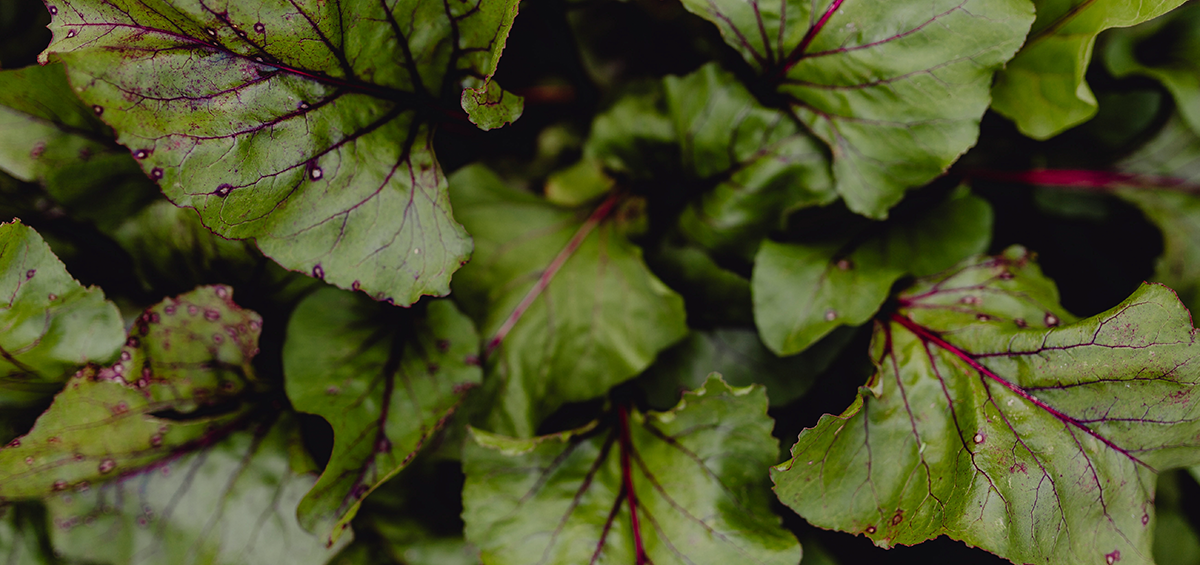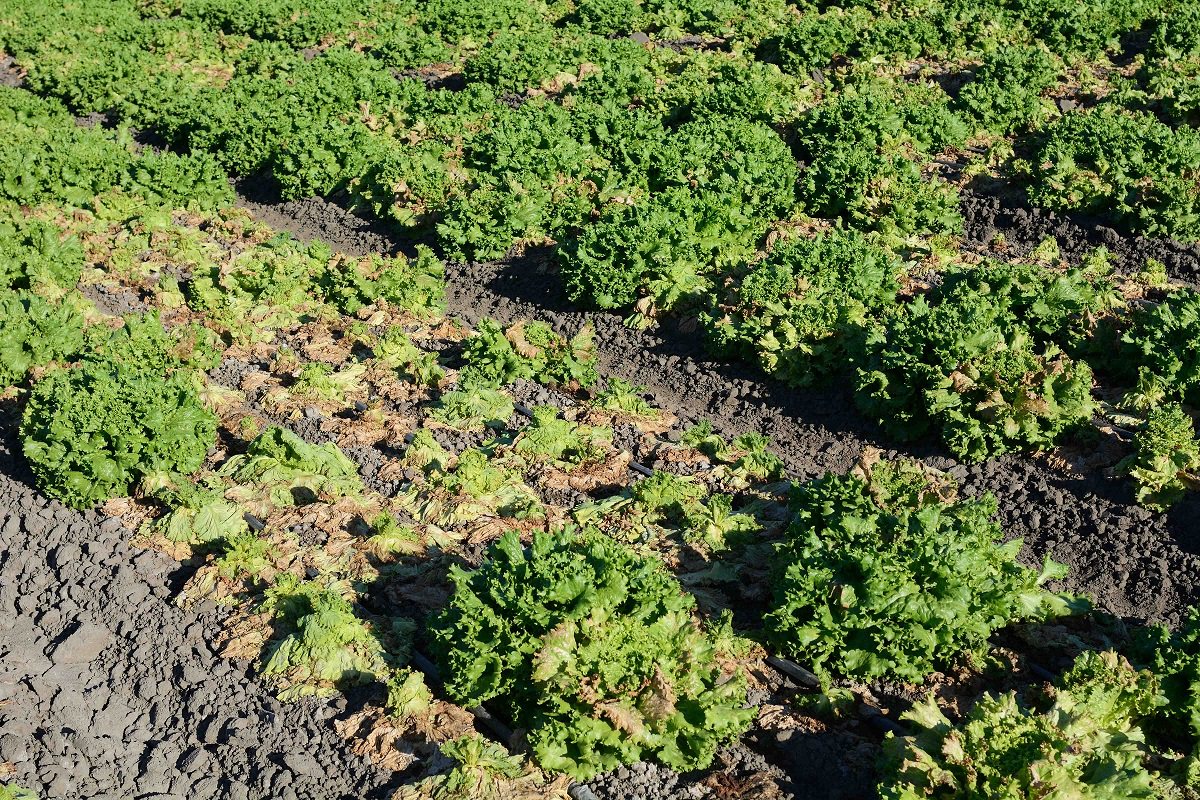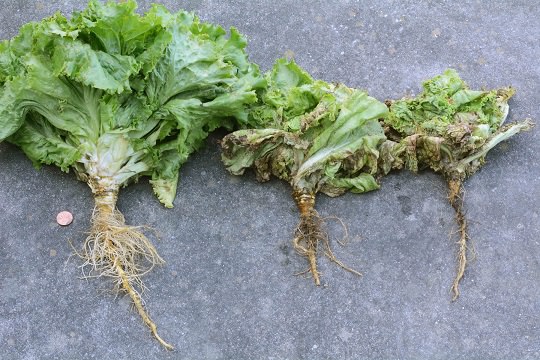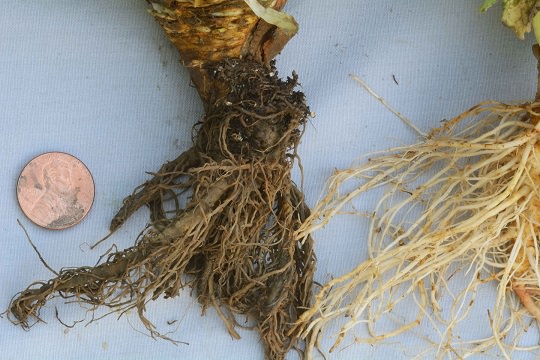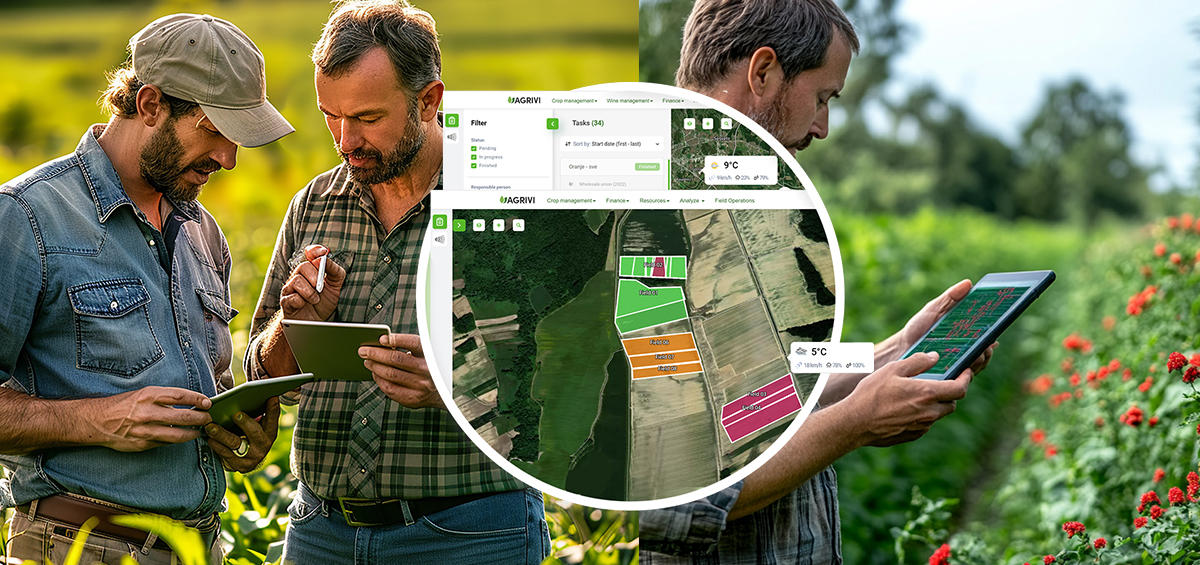Lettuce field severely infected with Pythium
Pythium species are soil inhabitants which exist and thrive in most agricultural soils for extended periods of time, especially if the soil is wet. Pythium is easily spread by water flow from irrigation, flooding, and movement of soil by tractors and equipment. It can occur during nearly every crop stage throughout the entire vegetation season. Many farmers forget to observe the crop’s root system, where the first signs of this pathogen occur. There are often no visible signs of pest attack on leaves until significant injury and/or death occur.
Pythium behavior and disease symptoms
There are several symptoms that farmers need to pay attention to in order to determine whether their lettuce is infected with the Pythium species:
- Chlorosis of the lower leaves. Plants take on a gray/green appearance with leaves that flag slightly during the heat of the day. Stunting is the most recognizable above ground symptom
- Infected roots are generally soft, mushy, appear in various shades of brown. The outer covering of the root, the cortex, is usually rotted and slides off easily when pulled, leaving the string-like vascular bundles behind. This is commonly referred to as ‘’sloughing of the roots’’.
- Plants under stress due to high soluble salt concentrations, poor soil drainage, over-watering and various root injuries are particularly susceptible to Pythium infestations.
Symptoms of the disease become most apparent after thinning at the rosette stage.
Severely stunted lettuce plants affected by Pythium. A healthy plant is on the left.
Lettuce roots infected with Pythium uncinulatum. Healthy roots are on the right.
Disease management
Pythium root rot is difficult to control once the infection occurs. Every effort should be directed toward preventing the disease. The following management practices should be considered:
- Avoid the planting of lettuce in fields with a known history of the Pythium problem
- In infected fields, crop rotation should be practiced and planting of other crops from lettuce family should be avoided
- Implement field sanitation practices to minimize the movement of contaminated soil from infested to clean fields
- Prepare beds to enhance water drainage, since the pathogen favors wet soil conditions
- Manage irrigation by avoiding the excessive soil moisture
- Keep all tools and equipment clean
- Fungicide or a biological control agents should be applied as early in the cropping season as possible (such as Trichoderma harzianum and copper based fungicides).
How can AGRIVI farm management software help with the Pythium disease?
It is important for every farmer to have complete control over his crop production. AGRIVI farm management software allows him to record and track all the activities in their fields. This includes the used amounts of pesticides, fertilizers, work hours of workers and other data. When a profitable crop production is in focus, a farmer needs to properly manage various farm activities, such as crop protection and accurate farm practices. AGRIVI software also gives farmers a knowledge base in the form of tasks, which guide them what to do during a certain vegetation season. Based on the weather forecast for each field, the software alerts farmers of possible pest and disease attack and gives them the list of active substances to treat the pest with.
Manage your farm the easiest way; avoid yield losses and protect your crops on time with the AGRIVI software.
Text sources: Cemonterey || Salinas Valley Agriculture || Extension || Better Plants
Image source: Salinas Valley Agriculture
